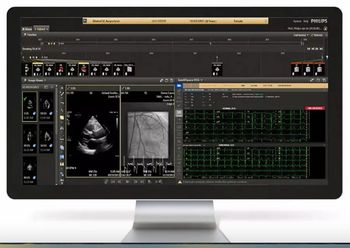
Satisfying Radiology Stakeholders
CHICAGO-It’s more important than ever that radiologists aim to please.
“You cannot talk your way out of a problem you behaved yourself into,” Jonathan W. Berlin, MD, MBA, clinical professor of radiology, NorthShore University HealthSystem, quoted from Stephen R. Covery, while discussing the present state of radiologists, at RSNA 2015.
Traditionally, radiologists have focused on maximizing speed, Berlin said, but an impending era of value-based care will expand what it means to be a “good” radiologist. And while traditional metrics include process, access, and structure, Berlin urged that, one important factor is missing in traditional metric models: people don’t pay attention to them.
There are two stakeholders radiologists need to appease, the patient and the referring physician.
Patients
Increased consumerism, a result of the ongoing trend of high deductible health plans, means that patients have now become consumers, and that means they shop around for better prices and higher quality.
Berlin looked to other industries to identify how consumers behave. Consider buying or renting a home and what factors are important in this decision: the house should be well-constructed (no foundation issues, doesn’t leak cold air), but also, we look at the neighborhood, schools, commute, and people in the community. In other words, Berlin said, the experience.
Other purchases signify the same trend: at restaurants, we’ll often consider not just the taste of the food in our critique, but also the ambience, food presentation, and staff attentiveness. When flying on an airplane, do we think about the safety record of the particular plane we are flying in or its last maintenance? Do we ask to speak to the pilot to see how long they’ve been flying?
“Instead, we pay attention to whether or not our baggage was lost, whether or not we had to wait, if the food was good, and the entertainment system worked,” he said. “We assume that we are going to get there safely, and to a great extent, that’s what patients assume.”
Berlin told the story of a conversation with someone who identified he was a radiologist based on the journal he was reading. The person told Berlin about two experiences they have had with CT scans. During the first CT scan, everyone was nice and the technologist explained the procedure. The other scan, they felt very rushed and the technologist didn’t explain the exam; it was a negative experience.
“What did they not mention in that?” Berlin said. “They didn’t mention the read, they didn’t mention the quality of the radiologist or whether the radiologist was subspecialized, or the turnaround time, or how much radiation was used.”
Berlin noted that whether patient experience is linked to outcome is controversial and not necessarily conclusive, what is clear, though, is that patient experience is linked to satisfaction.
To identify what patients want, Berlin points to patient survey data but also personal experience as a patient. They want personal contact, convenience, reassurance, and safety.
Wait time is one of the most important things that can affect your quality rating, Berlin said.
“Communicating with patients about wait time, letting them know their time is valuable is important,” he said. “Keeping the patient informed about wait time may, in fact, be more important than the length of the wait itself.”
Also consider making the wait productive, he suggested. Set up workspaces with internet hook ups, pagers, or DVDs.
Efforts to maximize the patient experience will only become more important as changes in health care lead to increased consumerism.
Referring Physicians[[{"type":"media","view_mode":"media_crop","fid":"47668","attributes":{"alt":"","class":"media-image media-image-right","id":"media_crop_162153753807","media_crop_h":"0","media_crop_image_style":"-1","media_crop_instance":"5638","media_crop_rotate":"0","media_crop_scale_h":"0","media_crop_scale_w":"0","media_crop_w":"0","media_crop_x":"0","media_crop_y":"0","style":"float: right;","title":"Jonathan W. Berlin, MD, MBA","typeof":"foaf:Image"}}]]
Referring physicians, however, have other priorities that radiologists also need to consider, Berlin said. And most important to referring physicians is the report.
It’s more than error rate that referrers are paying attention to in the report, he said. Especially since patients are seeing the reports now, too.
Reports should be consistent. If a previous radiology report noted 50 pulmonary nodules, and then you read a study and only report four, they are going to think you shortchanged them on 46 nodules.
There isn’t a shared consensus on the efficacy of structured reporting, but Berlin said it’s also important to think about who reports are structured for. They might be structured for the radiologist to make it easier to dictate, or structured for the stakeholders, by giving them what they need to hear in a concise, up-front manner.
Another point Berlin discussed was whether the referrer’s question was addressed.
“Somebody has a cough and fever, possible pneumonia,” Berlin said. “Heart: normal, lungs: normal, throat: normal, bones and soft tissues: normal, etc. Impression: normal chest X-ray. Does that comment on pneumonia?”
To radiologists, it does, he said, because if it was pneumonia, the report would have mentioned it. But to the clinician, you didn’t mention it.
Watch out for contradictions in reports left over from the default template, too.
Referrers also want to see standardization.
“How many of us are using our own standardized reports?” Berlin asked. “Are standardized reports the same for every single person that reads a CT abdomen/pelvis in the entire department? Are they the same from one department to the other?”
A mass standardization would be ideal, although more difficult to implement, he said.
Berlin mentioned a practice that calls new clinicians with negative exam results, just because it gives them an opportunity to introduce themselves.
Many practices also have different templates for particular conditions, for example, a template for appendicitis, or for a pancreatic cancer staging.
“They have conferred with their surgeons about what types of information they want and to what extent,” Berlin said. “That’s a way to customize it.”
Changing a culture is no small task, Berlin admits. It’s becoming more and more clear, however, that the patient is a customer. If the customers go away, you do too, he said.
Newsletter
Stay at the forefront of radiology with the Diagnostic Imaging newsletter, delivering the latest news, clinical insights, and imaging advancements for today’s radiologists.

























